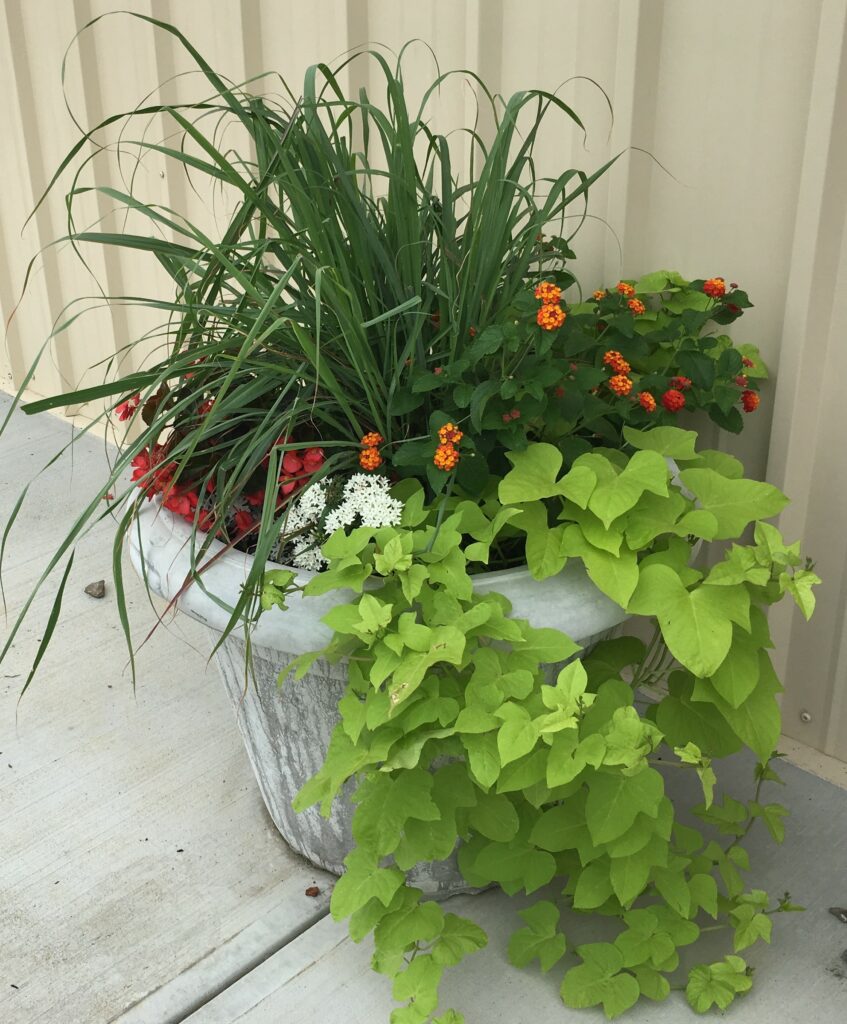May is here and our gardens are coming alive. Below are some tips for what you can do in your garden and landscape during the month of May:
Lawn
Leave clippings on the lawn – they return nutrients and water to the soil and do not contribute to thatch. Thatch build-up is the result of over-fertilization. If your lawn has a thatch layer thicker than a half inch, power rake in May to remove the thatch. Aerate lawns only if the soil has become compacted. The best time to aerate a lawn is when the grass is actively growing from May to June. Frequent mowing encourages lawns to thicken and reduces weed problems. Maintain bermudagrass, zoysia, and centipede lawns at 1” tall and St. Augustine lawns at 3-4”. Spray broadleaf weeds with a post-emergent herbicide. The best product to use will depend on the weeds you are trying to control and your turf type. Check lawns for white grubs and apply insecticides by mid-June. Best to control Japanese beetle grubs in May or early June. Use insecticides labeled for grubs like Merit, Advance Lawn Grub Control, and Season Long Grub Control.
Trees, Shrubs and Flowers
Prune spring-flowering plants, such as forsythia, azalea, camellias, oakleaf hydrangea, and spirea immediately after they finish flowering but before mid-July. If you wait until late summer or fall to prune, you will remove next season’s flowers. Scout for bagworms on shrubs and trees; especially pay attention to junipers, Leyland cypress, and cedars. Cut out or spray with Sevin, malathion, or B.t. (Dipel). Be on the outlook for two common rose diseases: blackspot and powdery mildew. Many fungicides are available to control these diseases including Daconil, Funginex, and Immunox which are the more common ones. Spray applications should be every 7 to 10 days starting in the spring and after heavy rains. Keep an eye on dogwoods, deciduous magnolias (tulip trees), crape myrtle, and viburnum for powdery mildew. Replace winter flowers (pansies, snapdragons, etc.) with heat-loving annuals like coleus, sweet potato vine, lantana, vinca, and petunias. Replace winter flowers (pansies, snapdragons, etc.) with heat-loving annuals like coleus, sweet potato vine, lantana, vinca, and petunias.
Your Gardening Tips Sponsored By
Fruit, Vegetables and Herbs
Plant late-season vegetables such as pumpkins, peppers, cucumbers, okra, and sweet potatoes. Do not forget to side-dress or fertilize your vegetable garden six to eight weeks after germination. Harvest onions, garlic, and potatoes when their tops start to die back. Mulch around vegetable plants to conserve moisture and reduce disease problems
Jessica Strickland is an Agriculture Extension Agent, specializing in horticulture for North Carolina Cooperative Extension in Wayne County.
Learn More! Sign up for the Wayne County Extension Gardening email list to receive timely gardening tips. Learn more by following us on Facebook and Instagram Gardening questions? Ask a Master Gardener Volunteer.
The Wayne County Extension Gardener Volunteer Plant Clinic is open on Mondays and Wednesdays from 10 a.m. to 1 p.m. (April through August) to help you with your gardening questions.
Contact by phone at 919-731-1433, e-mail or stop by the Wayne County Extension Office at The Maxwell Regional Agricultural & Convention Center (3114B Wayne Memorial Drive, Goldsboro).


